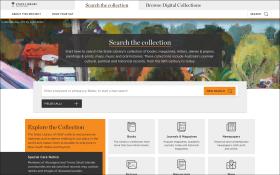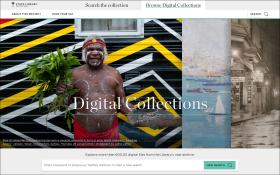Why are we building a new catalogue?
The Library’s catalogue is the primary way to search, request, and digitally access our immense collection of over six million items, including books, manuscripts, maps, photographs, paintings, architectural plans, objects and digital content.
Unfortunately, users of our current catalogue interfaces often report their frustrations in trying to find what they’re looking for. Despite best efforts to improve our systems, we have been receiving feedback like this for many years.
Here are some of the challenges with the current catalogues. The Library’s collections are broadly categorised into two main groupings, ‘published collections’ and ‘original materials’ - both use different and often technical language for formats, search filters and item availability, which leads to an inconsistent experience searching across both. The catalogue hierarchies, which are important to understanding the structure of an original materials collection, are not visible in the main catalogue, and when you do find them, they are clunky to use. There is no easy way to simply browse our digital collections. Loading images from large collections can take what feels like minutes, and these aren’t even the high-resolution images we could offer! You can’t search text within the thousands of books and manuscripts we have scanned and transcribed. It is easy to get lost, or not find the most relevant results, especially with a collection of our size.

Addressing these long-standing catalogue issues and improving access and discovery has been one of our State Librarian’s priorities. In March this year, we started work on a new and improved catalogue experience, with the goal for readers to search and browse the Library's collections more easily, intuitively, and enjoyably.
Our new catalogue is made up of two parts – the first is an enhanced search experience over the Library’s entire collection that is easier to navigate, simpler to understand and faster to load. The second is a new way to browse and explore the Library’s digital collections, which includes high resolution, fast-loading images that you can access on any device.
This focus on reader experience is well timed; the Library’s new Strategic Plan Inside Out has strategic priorities including 'putting the reader first' and 'expanding our audiences'. Our new catalogue puts us on the path towards these objectives.
We are still deep in development, but now have a ‘beta’ product ready for public testing and feedback – although this is only an early version of the new catalogue with just enough features to demonstrate the improvements. Our existing catalogue is still available and will continue to be the primary tool for searching and requesting access to our collections for the foreseeable future.

Now that we’ve addressed the why, it’s time to get to the how. Making something incredibly complex like our library catalogue look simple to the user is not easy and we’ve already learned many lessons along the way. We want to share our journey with you. This blog post will be the first in a series where we will delve into our design and development process. We will give you more insight into our challenges, decisions and learnings, as well as sharing any ongoing feedback and how we are responding to them. To get you better acquainted with our new catalogue experience, we’ve started by sharing 8 steps for building a better digital library experience.
Please take the time to explore our improved search experience or browse treasures from our digital collections. And please let us know what you think!
Robin Phua
Director, Digital Experience & CIO